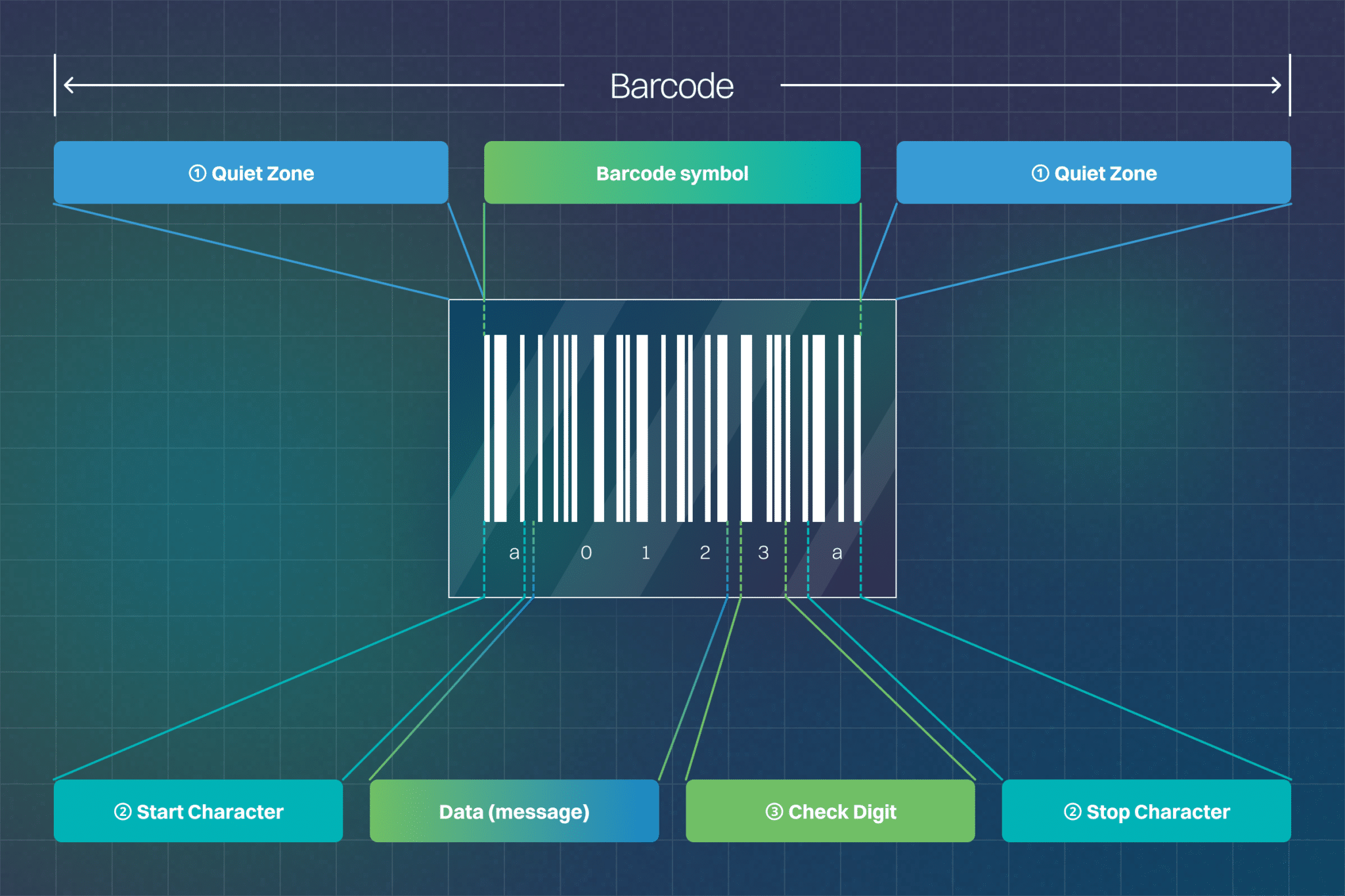Barcode Inventory Management System Implementation

In the eCommerce world, many merchants utilize barcode inventory management to streamline their operations.
A barcode inventory system can minimize error, save on payroll, and improve your ordering. Aside from affordability and increased efficiency, there are many benefits to adopting a barcode inventory management system.
And yet, some businesses still don’t understand what it means or how to use it properly.
Throughout this article, we will uncover how barcode inventory is able to transform the disarray and chaos of a warehouse and turn it into a well-oiled machine fit to tackle any inventory discrepancies you may be facing. You will learn:
- What barcoding is
- The difference between businesses that use barcode inventory management and those that don’t
- And where to start if you are a business that currently operates without a barcode inventory system
What Are Barcodes?
A barcode is a machine-readable code in the form of numbers and patterns of parallel lines of varying widths printed onto a product for identification.
A barcode symbol typically consists of five parts:- A quiet zone
- A start character
- Data characters (including an optional check character)
- A stop character
- Another quiet zone
All of these symbols are what make each barcode, and subsequently each product, unique in an inventory environment.
A barcode reader is required in order to read the code. The reader uses a laser beam that is able to sense the reflections from the lines as well as the space thickness and reformat that pattern into a number in a digital format.
Inventory systems, POS systems, etc. use this digital format to transfer information about that product to various locations where users can make smart decisions about their product and business based on the data that is collected.
Barcode Types
One thing to keep in mind about barcodes is that there are many different types, and they serve vastly different purposes.
These purposes differ for various reasons. Some are different simply because of the country and its usage, while others differ because of functionality. Generally speaking, there are approximately 15 different types of barcodes.
However, barcodes are entirely customizable and can be adopted for unique use cases depending on what inventory barcode system you use, and your specific tracking needs.
For example, here at SkuVault, we recommend that our clients create barcodes for their locations within their warehouse and product SKUs (both are customizable barcodes) in conjunction with UPC codes.Both are great for optimal tracking. By using these forms of barcodes, pickers and other users are able to find, track, and ship items with ease.
SkuVault uses Code 128 encoding, making our barcodes readable by most scanners including the CT10.
[html_blocks id=”15262″]
How to Implement a Barcode Inventory System
Many companies who don’t use barcodes for their inventory are slow to adopt new systems because they fall victim to a sort of “logistics paralysis.”
When they think of the actuality of implementing a new system, doubt begins to arise. Implementing a new system can be tedious and takes time.
Managers find it simpler to put off implementation until some arbitrary date, or in many cases, they just don’t know where to start.
“Barcode systems generally pay for themselves within 6-18 months.”
– Barcoding Incorporated
Start With a List
Like the old saying goes, “There is no time like the present.” Regardless of where you are with inventory, swiftly and aggressively implementing a solution is best.
Managers should start by making a master list of everything that might be in their warehouse or stockroom. This list should include item numbers, unit of measure, and descriptions at a minimum. You may also include:
- Purchase cost
- Vendor information
- Minimum inventory amount
- Other pertinent information associated with all items
Aggregating this information ensures that you will have all the essentials for importing product information into any inventory management system you choose.
SkuVault Inventory Management System makes this process especially simple with our easy import feature. If you don’t have a master list of products with this information, simply ask your suppliers for the information.
This will decrease the amount of time spent pulling the initial information together.
Putting Barcodes on Inventory
Many items purchased already come with barcodes attached. If the barcodes already exist, congratulations! You have already saved a great deal of time.
All you have to do is ensure the barcodes match the item numbers on your master list. If you have products that don’t have barcodes already, your next step is to purchase a barcode printer.Even if your products do come with barcodes, you may want to purchase a barcode printer so you can establish product locations within your warehouse or stockroom. You may even find it useful to relabel items if need be.
You can get started with a barcode font (an IDAutomation software). Barcode font gives you an inexpensive and flexible way to print high-resolution labels quickly.
Inventory With Barcode Management vs. Inventory Without Barcode Management
Smart inventory management is a key component of the overall growth of any company. Those who manage inventory are responsible for keeping up with inventory levels, out of stocks, product locations, tracking, receiving, shipping, and more.
These responsibilities are vital, and mistakes made in these areas can be costly. Mismanagement of inventory can lead to lower sales, decreased market share, increased inventory cost, and loss of rapport with customers.
Understand that human error is inevitable, but by adopting barcode inventory management, errors decrease dramatically.
Barcode inventory systems are a more reliable and efficient method to inventory management.
In an effort to alleviate manual processes, barcode inventory management allows managers to perform their duties in a more convenient and efficient manner. Thus, resulting in increased accuracy and faster processing.
Companies use barcoding because:
- It’s simple
- It’s cost effective
- The technology is easily available
- Barcodes eliminate error
- Barcodes provide security
- Inventory tracking with barcodes saves time
Without an inventory barcode system, the workload and number of tasks become an unnecessary burden on inventory managers. Managers have to manually write down important figures and information about products.
Every stroke of the pen and button pressed on the keyboard opens up room for human error, and if not caught immediately, chances are the mistake will go unnoticed until it results in a problem.
Using outdated methods and software like Excel, along with pen and pad methods, are simply unreliable.
Benefits of Using Barcode Inventory Management
No matter the business you’re in, you most likely have inventory that has to be managed. Whether you have items for sale, raw materials, finished products, tools, parts supplies, etc., barcode inventory management comes with lucrative benefits.
These benefits can be seen in the following:
- You know what you have and where it is.
- Ability to receive, put away, move and ship out (to internal or external users) all the items you have in inventory.
- You have pertinent, up-to-date reports about stock levels, usage, and reorder times for all the items in inventory.
- Easy to enter and extract data.
- It makes cycle counts easy and efficient. It will export data easily to your accounting or other back-end systems.
Summary
After you have labeled products, designated locations, and imported product info into your new inventory management software, you have successfully taken your first steps in implementing a new barcode inventory system.
These steps are going to take some time, but the good news is that the hardest part is behind you. Now you can take ease in knowing that you have eliminated most of the inaccuracies in your warehouse and can expect to see ROI as a result in saving from mis-ships, out of stocks, and human error.Ready to get started? See our guide on how to make your own barcodes for next steps.
If you like this post, you might find these resources helpful too:
- How to Get Started Creating SKUs Right Now
- Sunglasses Retailer Shady Rays Fulfills Faster With Barcode Scanning
[html_blocks id=”20106″]
